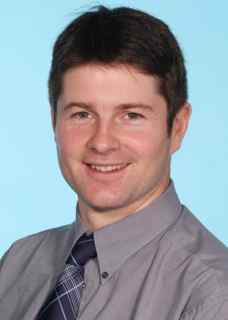Andy Affleck talks to DrB

Andrew Affleck is a Consultant Dermatologist and Dermatological Surgeon based at Ninewells Hospital, Dundee, Scotland. Andy and DrB first met at an European Society for Dermatology and Psychiatry Congress in Zaragoza, Spain in 2011.
Here they discuss the introduction of The Combined Approach into a UK National Health Service Dermatology Clinic.
DrB: Before you started using habit reversal what was your experience managing atopic eczema in secondary care?
AA: Frustrating, at times! If there was resistance to the standard topical treatment, moving on to systemic treatment, or phototherapy, would be the next steps to consider. But it was obvious that repetitive scratching was important as a cause of chronicity.
DrB: How did you come to introduce The Combined Approach into your clinical practice?
AA: I first heard about habit reversal when I was training in Nottingham. Since I became a Consultant here in Dundee, I have developed a psychosomatic approach to skin disease, and have been especially interested in cognitive-behavioural methods. Looking through the relevant literature, I found the excellent book you wrote with Peter Norén and Richard Staughton, and decided to put The Combined Approach into my clinical practice - I prepared patient information leaflets, and bought a load of hand tally counters!
DrB: As a "psychological" intervention, do you regard it as difficult to use?
AA: No, not at all - the principle and practice of habit reversal are really easy to understand and use. Rather than seeing it as a "psychological" intervention, I would emphasize the common sense of the approach in changing an unhelpful behaviour, with the emphasis on empowerment and successful self-management. Hence the approach can enable the patient - who needs to be motivated, and dedicated, to achieve optimum results. Indeed, if initial engagement is not achieved, the results of treatment can be disappointing.
DrB: How do you decide when is appropriate to use habit reversal as part of the treatment of atopic eczema with a particular patient?
AA: When it is evident that repetitive scratching is a big part of the picture, from what is reported by the patient, and from what is evident from observation and examination in the clinic.
DrB: Some clinicians use The Combined Approach as it is described in the book, and some adapt the protocol. What works for you?
AA I start with the protocol as recommended - however, often patients adapt it themselves a little, to suit their needs. But it is always important to ensure that not only habit reversal is used correctly, but that it is combined with optimal topical treatment.
DrB: How have you assessed its effectiveness in your practice?
AA: Yes, a key part of clinical practice is to assess improvement. When habit reversal is added in to the management of atopic dermatitis, there is a reduction in the Dermatology Life Quality Index score and overall, clearly happier patients and reduced signs of active eczema at review - these are the main indicators of its effectiveness. Then later, patients know it works, and can resort to intensive periods of retraining, if they need to - it is a no-brainer!
DrB: Have you used the approach with equal success in all ages of patient?
AA: I don't see many children, so I can only comment on my experience with adults - all of whom, who have bought into the concept, have reported improvement.
DrB: What are the limitations to introducing The Combined Approach more widely into clinical practice?
AA: The main difficulty in my opinion is that its effectiveness remains relatively unrecognized. That, together with the idea that teaching habit reversal is thought to need special expertise. The self-help version, and the involvement of dermatology nurses and the primary care team, are all very feasible and practical ways of making the approach more widely available. The Combined Approach should be seen as part of a comprehensive, holistic approach to atopic dermatitis management. And, by the way, this website is a good resource, both for my own work, and my patients; I also recommend it to my colleagues.
DrB: What has been your experience using habit reversal in skin conditions other than atopic eczema?
AA: It is useful - I incorporate habit reversal as part of my cognitive-behavioural approach to other disorders where there is an important habitual behavioural component, for example lichen simplex, prurigo, acne excoriée, and pathological skin picking syndrome.
DrB: Thank you, Andrew.
How would you sum up habit reversal, and The Combined Approach to atopic dermatitis?
AA: What is really important is the patients' point of view. It is about them understanding themselves, and their condition - and how they interact with their condition. Self-management with confident empowerment is the goal for success in coping with any longstanding condition - and in chronic atopic dermatitis, habit reversal is a key component.